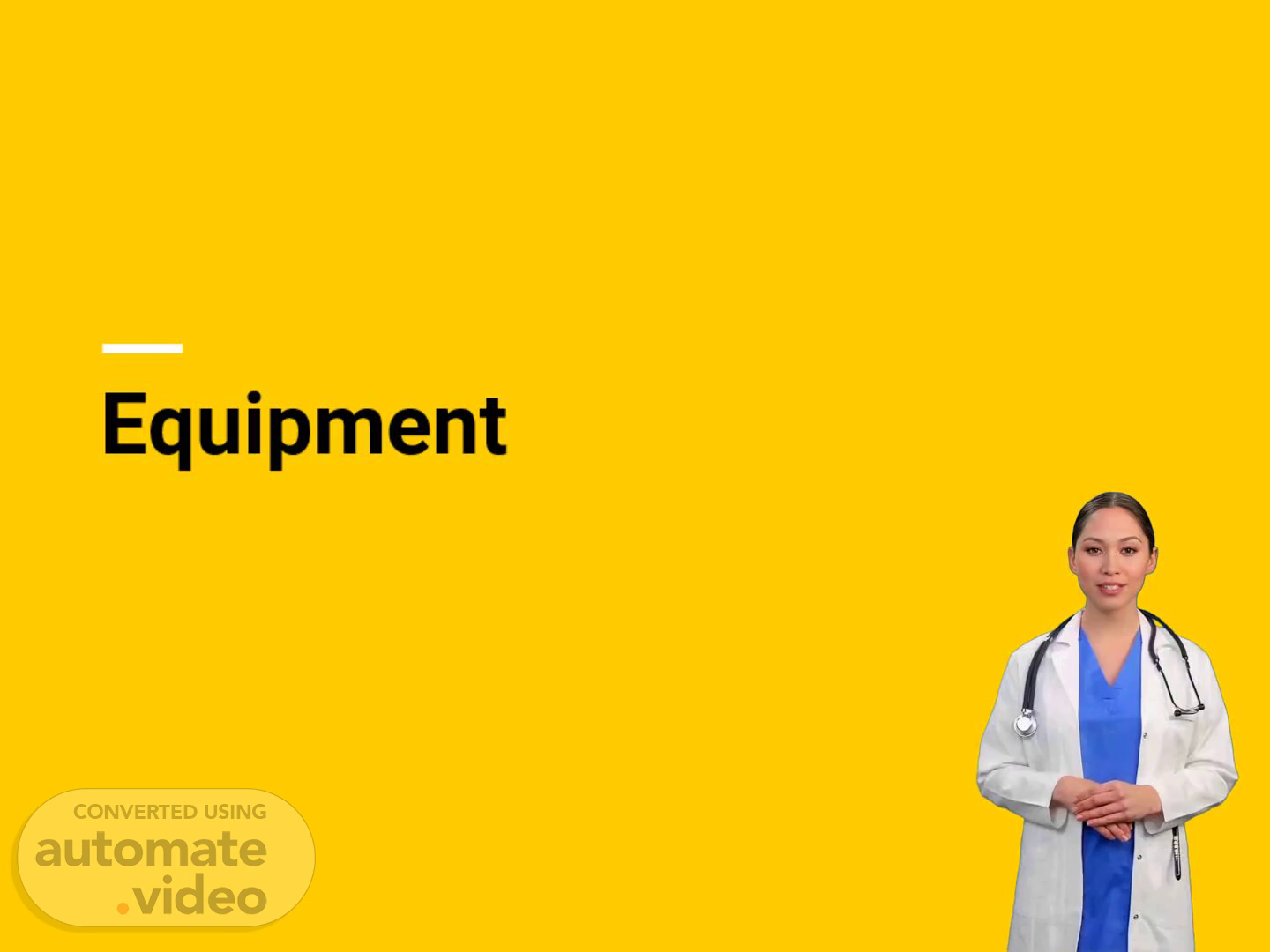Scene 1 (0s)
[Virtual Presenter] Equipment. Equipment. Equipment.
Scene 2 (5s)
[Virtual Presenter] Equipment Equipment Ultrasound Needle selection.
Scene 3 (12s)
[Virtual Presenter] Ultrasound Ultrasound physics Sound waves are mechanical, longitudinal pressure waves characterized by frequency, amplitude, and wavelength.
Scene 4 (23s)
[Virtual Presenter] Ultrasound physics Ultrasound = sound waves >20000Hz Pulse-echo effect (piezoelectric) U-S waves sent into body reflects off structures returns to transducer Reflected image is based on the intensity of returning echo Hz= frequency.
Scene 5 (44s)
[Virtual Presenter] Ultrasound physics Echogenicity Anechoic/Sonolucent Black, without echoes Hyperechoic Having more echoes when compared to adjacent structures Hypoechoic Having less echoes when compared to adjacent structures Isoechoic Having the same echoes when compared to adjacent structures.
Scene 6 (1m 5s)
Ultrasound. A screenshot of an ultrasound Description automatically generated.
Scene 7 (1m 12s)
[Audio] Ultrasound physics Transducer Selection Footprint required for exam Depth of desired image Higher frequency = greater resolution = less penetration Lower frequency = less resolution = greater penetration.
Scene 8 (1m 30s)
Ultrasound. WOS€ ZHVNS-L eqoJd Kenv paseqd woot ZHYNS-Z eqoJd Jeeu!umno wog ZHVN€ L-S eqoJd Jeeu!7.
Scene 9 (1m 37s)
[Audio] Advantages Improves success rate Image guidance during needle advancement Direction of change Depth of field change Speeds onset time Lower amount of local anesthetic Improved patient satisfaction Advantages over nerve stimulator techniques Traditional nerve block techniques (landmark or nerve stimulator) have 20% failure rate in majority of practitioners.
Scene 10 (2m 0s)
[Audio] Clinical pearls Stabilize your hand Look at the screen, not at the patient Positioning is everything Pushing harder ≠ better image Canting U-S probe Move the skin Gel is your friend Ultrasound use is like going to the eye doctor.
Scene 11 (2m 15s)
[Audio] The future?. Ultrasound. The future?.
Scene 12 (2m 21s)
[Audio] Needle Selection Not going to cover catheter insertion.
Scene 13 (2m 27s)
[Audio] Block Needle Size Interscalene 22G, 50 millimeters Supraclavicular 22G, 50 millimeters Axillary 21G, 90 millimeters Adductor canal 21G, 90 millimeters Popliteal 21G, 90 millimeters.
Scene 14 (2m 46s)
[Audio] Hydrodissection Administering distilled water or normal saline to confirm placement of the needle tip prior to injection of local anesthetic Advantage Needle tip confirmation Prevention of vascular injection (L-A-S-T-) or intraneural injection Disadvantage Dilution of local anesthetic even experienced physicians need to manipulate the needle several times and perform multiple injections, with potential consequences of unintentional vascular punctures and local anesthetic systemic toxicity (L-A-S-T-).[4] In order to prevent such complications, it is necessary to confirm the needle location before giving LA. Hydrodissection is performed by giving liquids such as distilled water or saline before LA to see the place where the given liquid reaches in the ultrasound image. Thus, the location of the needle tip is confirmed. However, since hydrodissection dilutes LA, it may reduce the effectiveness of the block.[5].
